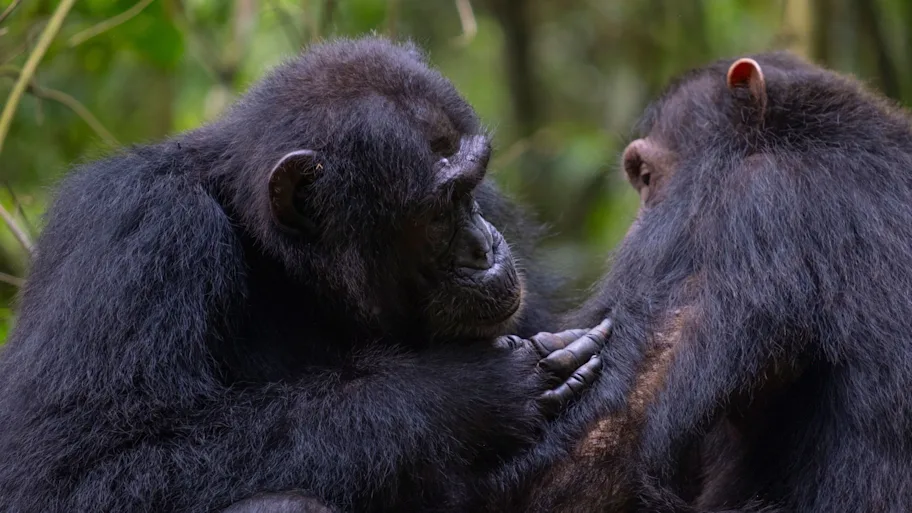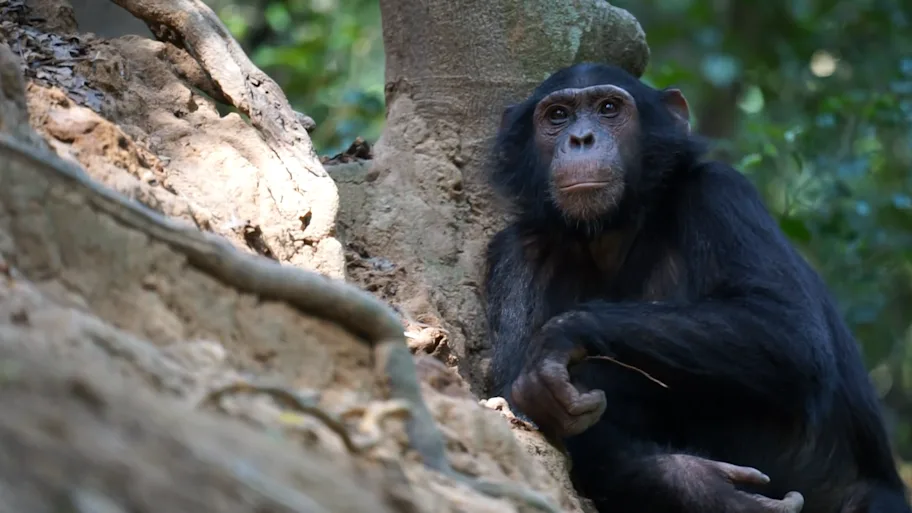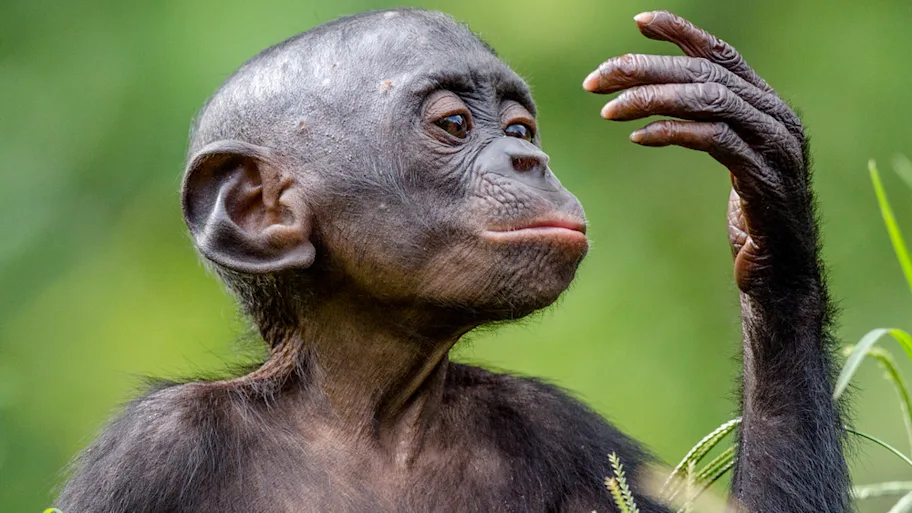
- Science news
- Featured news
- How much time did our ancestors spend up trees? Studying these chimpanzees might help us find out
How much time did our ancestors spend up trees? Studying these chimpanzees might help us find out

A new study on savannah-living chimpanzees could help answer some of paleoanthropology’s oldest questions about the origins of walking on two legs. Some theories suggest that the spread of savannahs pushed hominins to walk upright on the ground, a more efficient way to move in this environment. But many early hominins are still well-adapted for climbing. The study found that chimpanzees living in a savannah-mosaic environment continued foraging in trees, and spent most time in trees foraging for the most abundant or nutritious foods. These results suggest that those arboreal adaptations remained critical for early hominins’ survival after bipedalism appeared. They might even have contributed to the development of walking on two feet.
It’s hard to tell when — and why — our ancestors got down from trees and started walking on two legs. Many early hominins capable of bipedal walking were also well-adapted for climbing, and we lack fossil evidence from a key period when climate change turned forests into open, dry woodland called savannah-mosaic, which might have pushed hominins onto the ground. Now a study on modern chimpanzees could help fill in the gaps. Scientists observing chimpanzees in the Issa Valley, Tanzania have shown that despite living in a savannah-mosaic, they frequently climb trees for valuable food — potentially explaining why early hominins kept their arboreal adaptations. ^
“For decades it was assumed that bipedalism arose because we came down from the trees and needed to walk across an open savannah,” said Dr Rhianna Drummond-Clarke of the Max Planck Institute for Evolutionary Anthropology, lead author of the article in Frontiers in Ecology and Evolution. “Here we show that safely and effectively navigating the canopy can remain very important for a large, semi-arboreal ape, even in open habitat. Adaptations to arboreal, rather than terrestrial, living may have been key in shaping the early evolution of the human lineage.”
Habitats and hunger
Issa Valley is divided between a small amount of thick forest surrounding riverbanks and open woodland. The chimpanzees forage more in the woodland during the dry season, when it offers more food. Their habitat and diet are comparable to those of some early hominins, which means their behavior might offer insights into those extinct hominins’ lives.
“Our previous research found that, compared to chimpanzees living in forests, Issa Valley chimpanzees spent just as much time moving in the trees,” said Drummond-Clarke. “We wanted to test if something about how they foraged could explain their unexpectedly high arboreality. Savannah-mosaics are characterized by more sparsely distributed trees, so we hypothesized that adapting behavior to forage efficiently in a tree would be especially beneficial when the next tree is further away.”
Researchers monitored the adults of the Issa community during the dry season, watching how they foraged in trees and what they ate there. The size, height, and shape of the trees were recorded, as well as the number and size of branches.
Issa chimpanzees mostly ate fruit, followed by leaves and flowers — foods found at the ends of branches, so the chimpanzees needed to be capable climbers to reach them safely. They spent longer foraging in trees that were larger and offered more food. The longest foraging sessions, and the most specialized behaviors to navigate thinner terminal branches, were seen in trees with large open crowns offering lots of food: perhaps abundant food justified the extra time and effort. A similar trade-off between the nutritional benefits of specific foods and the effort of acquiring them could also explain why chimpanzees spent longer in trees while eating nutritionally-rich, hard-to-access seeds.

Read and download original article
Fast food
Because they are relatively large, chimpanzees move within trees not by climbing on thin branches but by hanging under them, or standing upright and holding on to nearby branches with their hands. Although these ‘safe’ behaviors are traditionally associated with foraging in dense forest, these findings show they’re also important for chimpanzees foraging in a savannah-mosaic.
“We suggest our bipedal gait continued to evolve in the trees even after the shift to an open habitat,” said Drummond-Clarke. “Observational studies of great apes demonstrate they can walk on the ground for a few steps, but most often use bipedalism in the trees. It’s logical that our early hominin relatives also engaged in this kind of bipedalism, where they can hold onto branches for extra balance. If Issa Valley chimpanzees can be considered suitable models, suspensory and bipedal behaviors were likely vital for a large-bodied, fruit-eating, semi-terrestrial hominin to survive in an open habitat.”
However, the researchers say that we need more fossil evidence and more studies on different aspects of chimpanzee foraging to test this idea.
“This study only looked at foraging behavior during the dry season,” cautioned Drummond-Clarke. “It would be interesting to investigate if these patterns remain during the wet season. Analyses of the nutritional value of foods and overall food availability are also needed to test our hypothesis that a strategy of foraging for longer in large trees on certain foods is energy-efficient in an open habitat.
“Importantly, this is also only one community of chimpanzees. Future studies of other chimpanzees living in such dry, open habitats will be vital to see if these patterns are truly a savannah-mosaic signal or unique to Issa.”

REPUBLISHING GUIDELINES: Open access and sharing research is part of Frontiers’ mission. Unless otherwise noted, you can republish articles posted in the Frontiers news site — as long as you include a link back to the original research. Selling the articles is not allowed.







